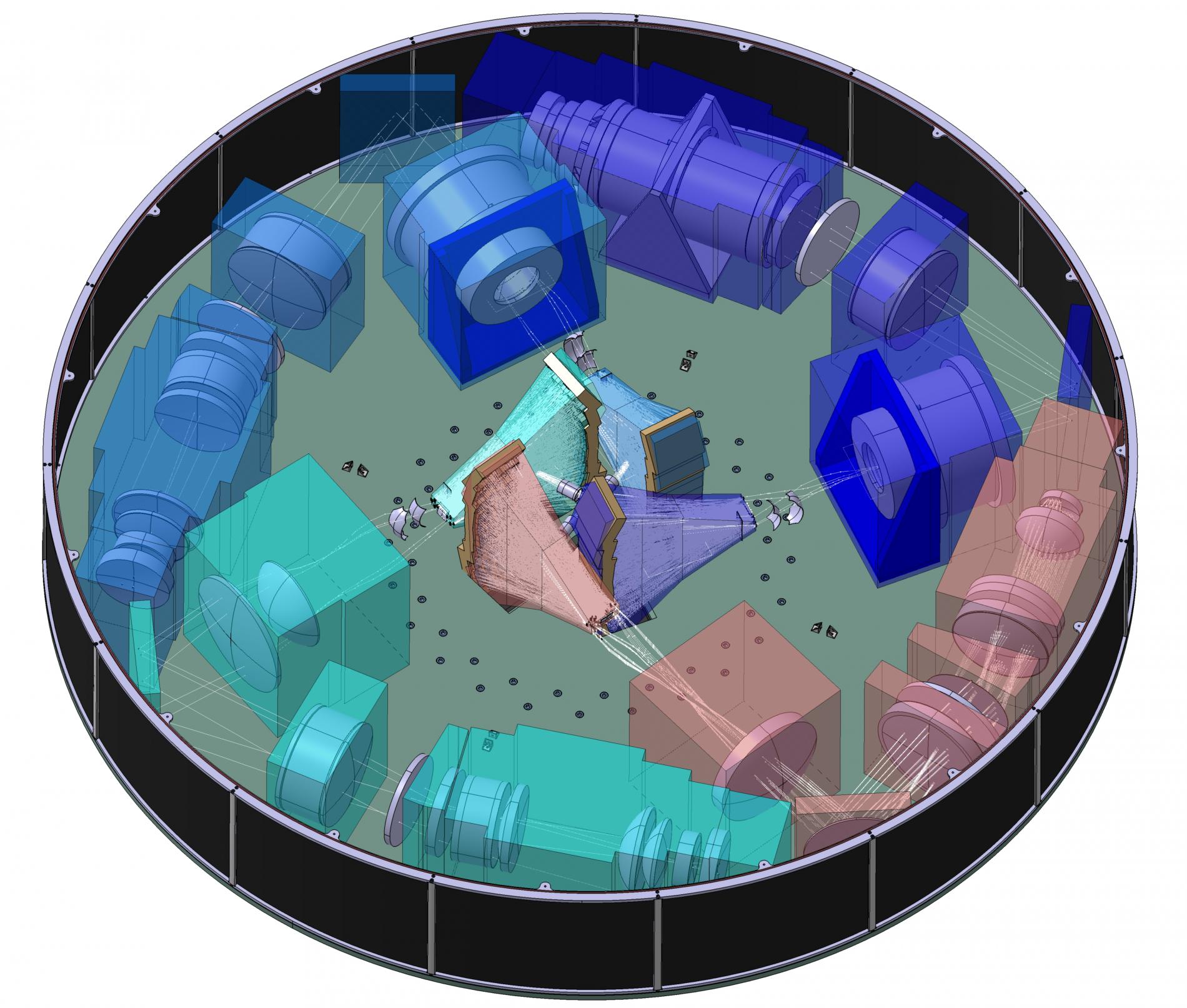The construction of TARSIS, the next generation instrument for the Calar Alto 3.5-metre telescope, has started
TARSIS has unique features, in particular its ability to detect light in the near ultraviolet and its unprecedented field of view
On 27-28 October 2022, the meeting that will start the development of the TARSIS instrument will take place at the University of Almeria. This project is co-led by the Institute de Astrophysics of Andalusia (IAA-CSIC) and the Universidad Complutense de Madrid (UCM), in close collaboration with the Calar Alto Observatory (Centro Astronómico Hispano en Andalucía, CAHA), three Andalusian universities (Almería, Granada and Seville), the Centro de Astrobiología (CAB, CSIC-INTA), the industrial partner FRACTAL S.L.N.E. and the Mexican INAOE.
The workshop will be a meeting point for the team involved in the development of TARSIS, and also a starting point for the design of the different subsystems that will make up the instrument once its development is completed. In addition, a visit to Calar Alto Observatory is planned so that the project team can get to know where the fruit of their work will be located.
The name TARSIS, an acronym for Tetra-ARmed Super-Ifu Spectrograph, refers to its optical design based on four arms, three of them sensitive to blue wavelengths and one sensitive to red wavelengths. The combination of a wide field of view (3x3 arcminutes) and a high sensitivity from ultraviolet (in the range known as UV-A) to red wavelengths will make TARSIS a unique instrument. The design of TARSIS and the exquisite transparency of the Calar Alto sky will allow observing in the full UV-A range, a domain almost unexplored from Earth.

"The angular resolution of TARSIS, combined with its wide spectral coverage, will allow us to observe galaxy clusters at distances where the internal structure of galaxies can still be resolved, and where we can extract relevant information about their star formation history and chemical enrichment. And thanks to its large field of view, we will have information on galaxy clusters, from their central regions to the outermost areas where the cluster effect fades away", says Jorge Iglesias, TARSIS co-principal investigator at the IAA-CSIC. Armando Gil de Paz, co-principal investigator of the project at UCM, adds that "TARSIS is a great challenge, as obtaining information in such a wide energy range and in a field of this size in two-dimensional spectroscopy is unprecedented in any telescope on the ground or in space".
Once the development is completed, TARSIS will become part of the instrumentation available at the Calar Alto 3.5-metre telescope. However, during the first years of observations, TARSIS will be mainly dedicated to the CATARSIS project, which will study a sample of sixteen distant galaxy clusters and will shed light on earlier stages of the universe: these are galaxies that are 20% to 25% less massive than the ones we see in the local universe, but which, on their way to becoming the galaxies we see today, formed stars at a rate three times faster than today. The CATARSIS observations will validate the standard cosmological model and help us understand the nature of dark matter and dark energy, as well as the relationship between the evolution of galaxies and their environment. "Reaching this milestone will be possible thanks to the smart design of TARSIS coupled with the characteristics of the 3.5-metre Calar Alto telescope, an optimal combination to develop the science of the CATARSIS project", says José Manuel Vílchez, CSIC research professor and representative of the Institute de Astrophysics of Andalusia (IAA-CSIC) in the TARSIS construction consortium.
The construction of TARSIS will be financed through European Regional Development Funds (ERDF) and contributions from the consortium institutions in the form of facilities and personnel. The total cost of the instrument is estimated at 7.8 million euros, of which the Ministry of Science and Innovation has already granted Next Generation EU funds to CAHA to launch the project for 1.48 million euros under the public aid for ICTS in the framework of the Recovery, Transformation and Resilience Plan 2021.
Calar Alto Observatory is one of the infrastructures belonging to the map of Singular Scientific and Technical Infrastructures (ICTS), approved by the Science, Technology and Innovation Policy Council on 6 November 2018.
Instituto de Astrofísica de Andalucía (IAA-CSIC)
Unidad de Divulgación y Comunicación
Silbia López de Lacalle - sll[arroba]iaa.es - 958230676
https://www.iaa.csic.es
https://divulgacion.iaa.csic.es

